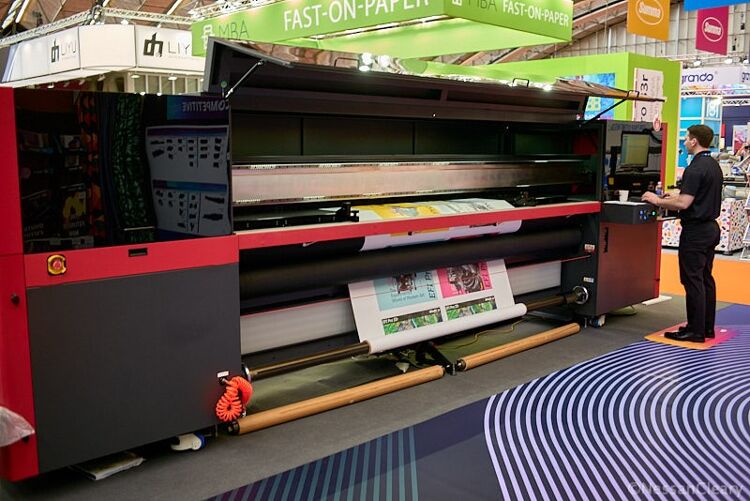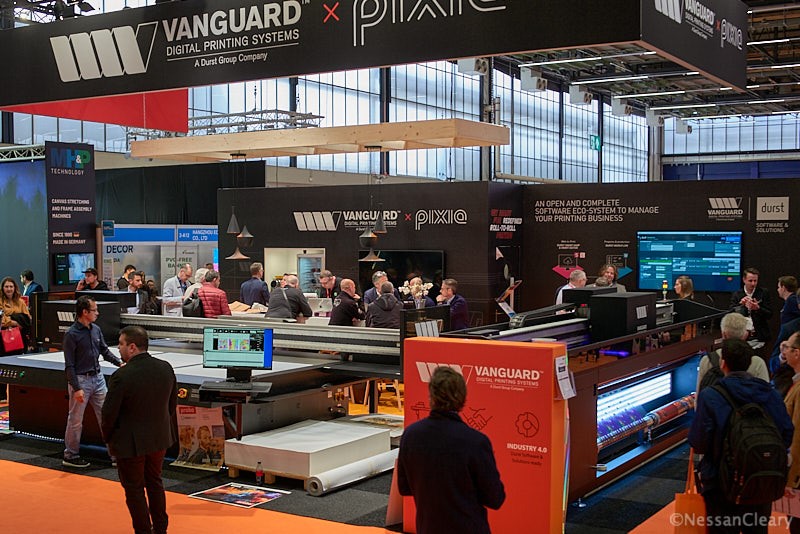Are analytics services worthwhile for wide format printing?

Nessan Cleary shares how press manufacturers are increasingly offering machine analytics services and shares if these are good value for money in the wide format sector.
From the start of this century we have seen a growing trend for press manufacturers to gather information about how their presses are performing in a bid to better understand the problems that might arise. The result is that most modern printing presses are bristling with sensors and even cameras that can record many different aspects of the running life of those presses. Press manufacturers can use this information to improve the design of their machines as well as to predict failure rates for individual components.
This in turn has allowed them to offer remote diagnostics and service packages tailored for specific machines and customers. However, this same information is also useful to print shops and can allow them to understand their running costs and plan their maintenance routines as well as giving them a deeper understanding of how their presses are used and whether or not they are really contributing their full value to the business.
This information can include relatively simple things such as how much ink each job consumes, or how much time it takes to print particular jobs, which is useful in setting prices. Most printers can now also record details of how particular components such as printheads are performing or how many hours items such as LED lamps or vacuum pumps have been in use for, which can be plotted against their expected service life. This data can also give an idea of how efficient individual operators are and can point to bottlenecks in the production workflow.
This begs two obvious questions: how to access this data; and how to make sense of it? Access to the data depends on the manufacturers of the equipment and how much data they are willing to expose to their customers. In this regard, commercial printers are in a stronger position thanks to the widespread adoption of JDF, which has meant that all the kit typically used, from prepress through to presses and finishing equipment, had to gather a lot of information on the machine’s running status.
This is much less common in the wide format sector, though most of the bigger printers do now record a lot of data. But other items, such as cutting tables or dye sublimation heat presses typically record much less information. There’s no set standard so some manufacturers may record far more details than others, and not all manufacturers are willing to give their customers free access to all of this data.
The other issue is how to use the data, which is likely to start off as a long stream of machine signals. Breaking this data down into useful parameters that can be easily understood is only half the battle. For that data to be of any real use, it needs to be continually assessed to see changes in the machine’s performance and spot potential problems before they become a crisis. In addition, all of this continuous information needs to be presented in an easily digested form so that operators and production managers can react to that data and take steps to prevent problems getting out of hand.
For now, there are two ways to do this. The first involves pooling all of the available data together in a management information system or MIS. This can be a very effective way of getting an overall view of how a business is running. But typically the emphasis is on the ways that all the different parts fit together, and identifying where they don’t quite fit. The ability to drill down into the minutia of individual machines depends very much on the MIS and any given implementation and the way its been tailored.
Increasingly, we are seeing a second option emerge as more press manufacturers start selling data analytics services to their customers. Such services are often sold on the basis of helping customers understand how they can squeeze more value from their printers which are likely to be their most expensive assets. This is more common in the commercial print world but the development of single pass inkjet presses, particularly for packaging, has also led many digital press manufacturers to invest in this technology, which is now coming to the large format market.
 Caption: Fiery has developed Fiery IQ which offers analytics for EFI’s wide format printers. Image credit: Nessan Cleary.
Caption: Fiery has developed Fiery IQ which offers analytics for EFI’s wide format printers. Image credit: Nessan Cleary.
Fiery, for example, which is now a separate company from EFI, has developed Fiery IQ as a set of cloud-based tools that promise to give print service providers a better understanding of their operation. These tools include a Dashboard, with an overview of the current state of each customer’s printers, plus Insight to compare historical trends, Notify to deliver alerts and Go, which sends production tracking data to a mobile device. It supports just about all of EFI’s recent range of large format printers including the Nozomi, and can be accessed via a web browser on either Windows or Macs.
Durst sells analytics software as part of its overall software offering, which also includes the Lift MIS as well as Web-to-Print and production workflow programs. Durst Analytics is a cloud-based system that gives users data for all the Durst printers they are running on a single screen, including large format as well as label and packaging printers. It includes live, historical and comparative data and can monitor unattended printers.
 Caption: Durst’s Analytics software is also available for customers of its Vanguard subsidiary. Image credit: Nessan Cleary
Caption: Durst’s Analytics software is also available for customers of its Vanguard subsidiary. Image credit: Nessan Cleary
The data from these analytics programs can also be exported to a MIS so that it can be combined with the overall data from the rest of the business. However, these analytics offerings should not be seen as an alternative to an MIS since they only cover specific printers and not the full range of equipment than an MIS can connect with.
Ultimately, the value of these analytics services to individual print service providers will come down to how vital those machines are to their business. For someone with a single printer, or a fleet of machines from the same manufacturer, the efficiencies gained from the analytics service may justify the costs. But many printing companies prefer to source equipment from a range of suppliers, and many also have other types of printers, including offset and label presses. Some of the information from these analytics services, such as ink savings, can be done from a colour management program, while an MIS can also give a good overall view of the efficiencies around particular machines.
Interested in joining our community?
Enquire today about joining your local FESPA Association or FESPA Direct
Recent news
.png?width=550)
Why you should exhibit at FESPA 2025!
FESPA Global Print Expo stands out as Europe's leading trade fair catering to the speciality print sector, screen printing, digital imaging, textile printing and decoration, interior decoration, packaging, and industrial printing.

The evolution of digital printing and sportswear
Digital printing is a crucial aspect of the production of sportswear. Sonja Angerer shares the importance for printers to be aware of the latest trends in digital printing and sportswear. In the last few years, there has been a true evolution in sportswear.

The top 5 most popular types of non-printed signage
The European Sign Expo 2024 that took place in March in Amsterdam has demonstrated once again, the popularity of non-printed signage. Today, there are numerous types of non-printed signage avaialble that feature suitable technology for every purpose. Sonja Angerer shares a few of the most popular and used types of non-printed signage.
